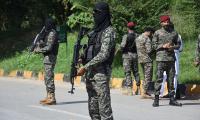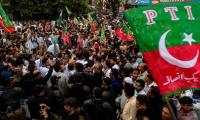Although, despite intense campaigning and pleading by Ukrainian President Volodymyr Zelensky, the Vilnius summit did not give any timetable for Ukraine’s path towards its membership, Nato acknowledged in paragraph 11 of its official communique that “Ukraine’s future is in Nato”.
For obvious reasons, the absence of clearly defined timelines and conditions for Ukraine’s accession was projected by the media as a personal setback for Zelesnky, who had harboured hopes that the Nato summit in Vilnius on July 11-12 would culminate in a concrete invitation for Ukraine to join the alliance. Ostensibly, the lack of such an invitation reflects the ‘cautious’ approach taken by Nato member-states, that remain wary of ‘provoking’ further tensions with Russia. However, the fact is that Nato has given much more than what Zelensky had expected from the Vilnius summit: unwavering pledges for extremely generous financial and military assistance to Kyiv as well as the creation of the Nato-Ukraine Council.
The Vilnius Summit has underscored the undeniable reality that Ukraine’s position in the European arena is central at the moment. President Zelensky may not have received the invitation, but the summit yielded a series of substantial victories for Ukraine. Notably, Ukraine has secured a commitment of military and economic aid from the G7, while also embarking on F-16 fighter jet training in collaboration with 11 partner countries. Germany, too, has pledged an impressive 700 million euros in additional military assistance.
Most significantly, the formal affirmation that “Ukraine’s future is in Nato” solidifies the nature of the partnership between Ukraine and the alliance. Similarly, certain Nato members are determined to manifest its significance in alternative manners, such as through the establishment of enduring security guarantees, reminiscent of the United States’ longstanding alliance with Israel, which receives $3.8 billion in annual military aid from Washington. US President Biden expressed willingness for such an arrangement, conditional upon the existence of a ceasefire and a peace accord. Moreover, reports indicate that the United Kingdom, France, and Germany are also contemplating similar assurances.
At the same time, the Vilnius summit has yielded another significant development in relation to the Ukraine conflict: the inception of the Nato-Ukraine Council. In this major move, Kyiv and the alliance’s 31 members will have a dedicated platform for consultation and joint decision-making. Beyond its consultative function, the council will also serve as a vital mechanism for crisis management, enabling Kyiv to summon urgent meetings when necessary. Moreover, the stated objective of this council is to bolster the extent of Ukraine’s collaboration with the alliance, enhancing a deeper and closer partnership.
However, the establishment of the Nato-Ukraine Council, apparently aimed at enhancing channels of communication and consultations with Ukraine, may inversely exacerbate tensions in the region. It is being viewed by Moscow as an indirect attempt to grant Ukraine a symbolic ‘seat at the table’ without conferring formal membership status. The formation of this council seems to be a calculated manoeuvre to further isolate Russia and expand Nato’s influence.
While the Nato-Ukraine Council may be seen as a symbolic gesture of support for Ukraine’s aspirations, its implications and potential consequences for regional stability cannot be overlooked. But critics allege that, with the establishment of the Nato-Ukraine Council as the latest manifestation of its long-term strategic intent, the trans-Atlantic alliance has once again revealed the organization’s expansionist agenda eastwards, which may further aggravate the tensions in Europe. The crisis meetings that Kyiv can convene through this council are considered to be a thinly veiled attempt to further stoke tensions and provoke Russia.
In 2008, Nato indicated that Ukraine could potentially join the alliance at a later time, but when Ukraine requested ‘fast-track’ membership in September 2022, it was declined. The reluctance to expedite Ukraine’s entry into Nato is rooted in the potential implications of Article 5 in Nato’s charter, which mandates that an attack on one member would trigger a collective defense response from all others. If Ukraine were to join amid the ongoing conflict with Russia, it would necessitate all Nato member countries declaring war on Russia.
During the Vilnius summit, Nato reiterated that Ukraine would be invited to join as a member “when allies agree and conditions are met”, indicating that the decision is contingent upon consensus and fulfillment of specific criteria. However, on this matter, Nato has again given a big concession by allowing Ukraine to bypass the Membership Action Plan, a step in the entry process.
Ukrainian President Zelensky also knows very well that Ukraine cannot join Nato while engaged in a conflict with Russia, but he has strategically used this dilemma as a bargaining chip to exert pressure on Nato leadership, seeking additional concessions and favors. By leveraging the unresolved question of Nato membership, Zelensky aims to secure advantageous outcomes beyond the realm of immediate membership. The Vilnius Summit, at its core, revolved around the issue of Russia and the imperative of preventing it from posing an enduring security challenge to Europe. The gathering remained focused on strategies to curtail Russia’s influence in the backyard of Europe – particularly in the backdrop of the Wagner episode.
Another key dilemma facing Nato in the foreseeable future lies in determining the circumstances under which Ukraine could potentially join the alliance – a decision that hinges not only on when the war concludes but also on how it concludes. Determining when this war has truly ended poses a considerable challenge to the Nato leadership. Complicating matters further is the fact that Putin may have a serious interest in perpetuating a ‘frozen’ conflict with Ukraine, viewing the nation-state as fictitious and leveraging it for political legitimacy.
This conundrum raises important questions about the nature of the conflict and its potential resolution. Can a definitive end be achieved when one party has a strategic stake in a prolonged and unresolved confrontation? Moreover, the conflict’s intricacies intertwine with complex geopolitical dynamics, historical narratives, and competing national identities. Ukraine’s path to Nato membership is grappled with the complexities of the war’s conclusion and the motives driving Russia’s actions.
Thus far, Nato has discussed the end of the war as a clean and definitive moment, but such a scenario is far from guaranteed. If the end of the conflict resembles a ‘frozen conflict’ akin to the situation between Moldova and the Russian-backed separatist region of Transnistria, where Moscow retains the ability to manipulate tensions at will, Ukraine’s aspirations for Nato membership could face significant hurdles for an extended period, possibly spanning years or even decades.
The writer is a freelance contributor.
Data, today, defines how we make decisions with tools allowing us to analyse experience more precisely
But if history has shown us anything, it is that rivals can eventually unite when stakes are high enough
Imagine a classroom where students are encouraged to question, and think deeply
Pakistan’s wheat farmers face unusually large pitfalls highlighting root cause of downward slide in agriculture
In agriculture, Pakistan moved up from 48th rank in year 2000 to an impressive ranking of 15th by year 2023
Born in Allahabad in 1943, Saeeda Gazdar migrated to Pakistan after Partition







